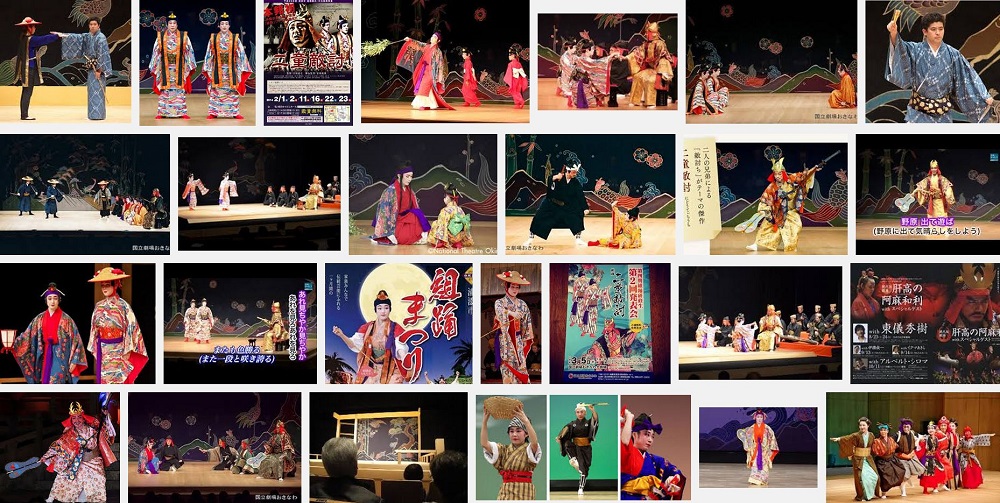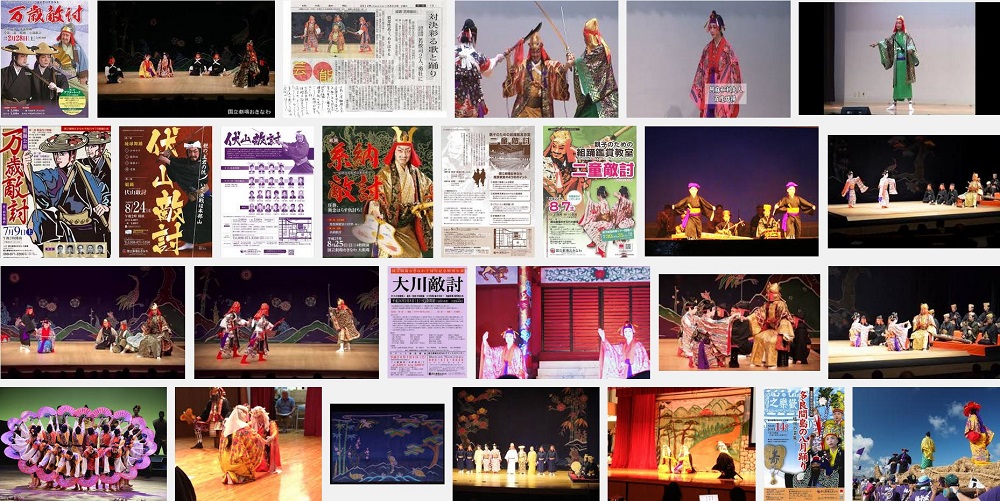Recently I cited a statement from the latest version of Okinawa Karate News on Facebook. It said,
“Okinawa should appeal to the world that karate is not a fighting martial art but the culture of Okinawa”.
Naturally, the statement received some opposition, as it represents one of the most emotional contradictions in the discussion of Karate per se. Western perception has a history of publicly describing, defining, and protecting what we consider to be the real technical, historical, and philosophical content of Okinawa martial arts. But what about the sayings of Okinawan masters, that Karate should be of use for society and that it should be strictly used for protection only? Is there more to it than just some pseudo-philosophical pomposity? What does it mean when Karate is considered a “culture of Okinawa” by Okinawan themselves, instead of just one of many fighting martial arts? Who are we to simply overlook this while at the same time pretending to aim at protecting the “real art”? Are we unilaterally taking Karate out of a context which we have not understood so far? Do we constantly diminish Karate to the fragmentary section that we prefer and that suits our own wishes?

Kumiodori, Ryukyuan-style hero stories.
Well, there might be clues to be found in the fistory of Karate. Again. In this 3rd episode of Nakahara’s article, we will find a historic fundament of the saying karate ha kunshi no bugei, or “Karate is the art of war of the wise man, the man of virtue.” I think this offers a solution for the above seeming contradiction between karate as a fighting martial art and that of a culture.
Nakahara Zenshu: Character and Weapons of the Ryukyu Kingdom (3)
Talking about the issue of weapons: in the field of war, cut and thrust weapons were imported articles and of a high price. Even in war times their possession was confined to Anji and advanced level leaders.
From treasured swords and from traditions related to swords, as well as from many of the old songs (uta) we can see that for the most part they were related to persons of the commander-in-chief class. From the perspective of Japanese habits there would have been a strange feeling towards the idea of an unarmed ruling class.
However, for the Anji who remained until the era of King Shō Shin (1371–1439) it is true that their official functions as well as their attire changed due to the reforms in the government organization. Moreover, the ideal of the Ryūkyūan upper stratum ruling class was that of a Confucian government. Their ideal was that of a person with outstanding knowledge, wisdom, and distinguished morals (seijin kunshi), not that of a hero or a warrior.
- Translators note on seijin kunshi: an epitome of wisdom and virtue; a model of knowledge and virtue; figuratively, a saint; personified perfection. * seijin 聖人, a model of knowledge, wisdom, and virtue, and * kunshi 君子, a man of perfect virtue; a morally perfect man; a true gentleman; a noble (e.g. at Confucius).
Among the politicians, the Anji did not count among the seijin. Instead, Shō Kyō was held in high esteem by the public, who served as the political regent (sessei 摂政) on behalf of King Shō Shin. Persons of Uēkata rank were considered kunshi, like Yonabaru Ryōko, who served as one of the three ministers (sanshikan) of King Shō On (1784–1802). Seijin and kunshi were the idealized images of a politician. This ideal consistently existed since the times of King Shō Shin with all prominent politicians without exception having been scholars or writers. Particularly
- Haneji Chōshō (1617-1675), author of the Chūzan Seikan (Mirror of the Ages)
- Sai On (1682-1761)), author of Hitori-monogatari (Soliloquy), and
- Tei Junsoku (1663–1734), author of Shinan-kōgi (The Broad Sense of Teaching), and others.
In the sphere of dōtoku, i.e. morality, ethics, or paragons of virtue, in Japan bushidō set the framework for morals in the daily life of the ruling class, with loyalty and fidelity (chū忠) towards one’s master having been the supreme one among the different virtues. Ryūkyū, not having a government of military men, did not have bushidō. Instead, the Confucian moral of filial piety (kō 孝) penetrated all through the upper and lower classes as the supreme moral, with no particular emphasis on loyalty in the Japanese sense.
In Sai On’s Honorable Tenets (Gokyōshō, 1732), he praises Confucian loyalty of samurai in sense of scholars, i.e. in sense of duty and sacrifice for family and society – that is, Confucian filial piety –, and not in the sense of a warrior.
- Translators note on Gokyōshō: a doctrinaire treatise promulgated by Sai On in 1732, bearing the joint signatures of other sanshikan and signed on behalf of the hyōjōsho, the highest institution in charge of state affairs. The text had the character of a legislative text and particularly aimed at the Ryūkyūan population. It was used as a textbook until 1879.
- Translators note on samurai: the term samurai used in Ryūkyūan history actually refers to the class of the keizoku, that is, those who have a family genealogy. This system was established in the late 17th century for the purpose of societal stratification. It does not correspond to the Japanese samurai in sense of a bushi (warrior).
Since the closing years of the Heian era (794-1185), the leaders of the Minamoto and Taira clans were caught in a continuous struggle for power in Japan. The symbol of supreme authority was the se’i-tai shōgun – or “General of the campaign against the barbarians” – not the seijin or the kunshi. Coming to the peaceful era under the Tokugawa rule (Edo era), Neo-Confucianism put on steam, and bunbu kenbi, i.e. being well versed in both literary and military arts became the idealized image of the Japanese warrior, characterized by the so-called “warlike spirit” (shōbu 尚武; militarism) and looking down on the “enervating attraction to books or learning” (bunshaku 文弱; effeminacy, morbid artistry; over-cultivation). The katana as the “soul of the warrior”, with matters such as kenjutsu, famous swords, swordsmiths, sword dōjō, knight errantry, vengeance, and seppuku as some of society’s foremost characteristics gave rise to an overflow of phrases such as tsujigiri (killing of a random passersby by a lurking Samurai at night to test the sharpness of his sword, or to exercise), tameshigiri (trying out a new sword on a dog, a cat, or a human), kirisute gomen (right of samurai to kill commoners for perceived affronts) etc.
- Translators note: When Okinawan martial arts are interpreted in this old Japanese sense of a “warlike spirit” and the vilified “enervating attraction to books or learning” are looked down upon as an effeminacy, a morbid artistry, or an over-cultivation, then, isn’t there something fistorically wrong in the perception of a self-appointed peaceful art of Karate?
These matters, which also became successful topics in calligraphy, painting, theatre, rhyme prose, and todays kengō shōsetsu (novels about chivalry, great swordsmen etc.) and kengeki (samurai drama with sword fighting scenes), are things loved by the general public. In view of Ruth Benedict’s “The Chrysanthemum and the Sword” (1946) as symbols of the character of the Japanese people this doesn’t seem to be unfounded. But in Okinawa’s feudal era no such things existed. When the kumiodori dramas of Ryūkyū were created, their narrative material either originated in a bygone Ryūkyūan period, or they used Japanese material or imitations of it. And when it comes to the bushi (warriors) featured in this kind of heroic stories: they had the meaning of a master of “Karate” (in sense of a kunshi), not that of bushi (warriors) in the Japanese sense.
- Translators note: Kumiodori where dramas of Ryūkyū that originated in early 18th century Shuri. Nearly all of them featured heroic stories and emphasized loyalty in a Japanese sense as their main theme, like avenging one’s lord and the like. They were the sort-of samurai stories of Ryūkyū deliberately referring to bygone eras of Ryūkyū or borrowing dramaturgy from Japans stage entertainment arts. As such they introduced foreign heroic ideals. Actually kumiodori received formal recognition by the Ryūkyū government which coopted them to serve the state’s ends by a deliberate introduction of a more Japanese perspective on martial prowess which was very different from actual native Ryūkyūan stories.

Kumiodori, heroic stories reated in Ryukyu sinnce the early 18th century.
Put simply: while both countries shared the common nature that their feudal governments and ruling were based on the establishment of social hierarchy, there was a government of military men on the Japanese side, and a government of literary men on the Ryūkyūan side. In other word: the Japanese government was characterized by the wearing of two swords, while the Ryūkyūan government was characterized by being unarmed. Yet, this was not a matter of political choice alone.
© 2015 – 2022, Andreas Quast. All rights reserved.
